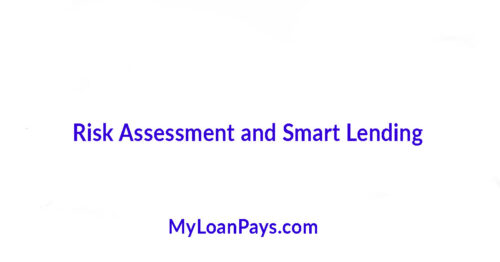Welcome, young learners, to the fascinating world of lending where we’re going to explore the secrets behind making wise lending decisions. First things first, let’s understand what “risk assessment” in lending means. It’s like being a detective, but instead of solving mysteries, we’re figuring out if lending money to someone is a good idea.
Importance of Smart Lending Practices
Why is this important, you ask? Well, just like you decide whether to share your toys with a friend based on how responsible they are, lenders decide whether to lend money to people based on how likely they are to pay it back. We call this “creditworthiness.”
Purpose of the Lender’s Playbook
Think of the Lender’s Playbook as a magical guidebook full of wisdom that lenders use to make sure they’re making the right choices. Today, we’ll be unlocking some of its secrets, focusing on the fundamentals of risk assessment and smart lending practices.
The Fundamentals of Risk Assessment
Understanding Borrower Creditworthiness
Imagine you have a friend who always returns the toys they borrow. That’s a trustworthy friend, right? Lenders want trustworthy friends too, but instead of toys, they lend money. They look at things like credit scores, which are like report cards for how good someone is at returning borrowed money. They also check if the person has a stable job and doesn’t owe too much compared to what they earn.
Evaluation of Collateral
Now, let’s talk about collateral. It’s like when you give your favorite toy to a friend but ask for something valuable in return, just in case they forget to return it. For lenders, collateral is something valuable, like a house or a car, that the borrower promises to give if they can’t pay back the money.
Analysis of Financial Statements
Imagine you have a lemonade stand. You’d keep track of how much money you make, how much you spend, and how much lemonade you sell. Lenders do the same thing but on a bigger scale. They look at financial statements, which are like the lemonade stand’s report card, to see if a business or a person can afford to repay a loan.
Key Factors Influencing Risk
Economic Conditions
Think of the economy like a giant playground. Sometimes it’s sunny and everyone is happy, but other times it’s stormy, and things get tough. Lenders pay attention to the weather of the financial playground – things like interest rates, inflation, and unemployment rates – to understand how easy or hard it might be for people to pay back loans.
Industry-Specific Risks
Different playgrounds have different games, right? Similarly, different industries have different risks. Lenders study these risks by looking at market trends, rules set by grown-ups (regulations), and how many players (competition) are in the game.
Borrower-Specific Risks
Just like you wouldn’t lend your favorite toy to someone who always breaks their own toys, lenders avoid lending to people with a history of not repaying loans. They look at how stable a person’s job is, how well they manage their business, and whether they’ve been responsible with borrowed money before.
Tools and Technologies for Risk Assessment
Credit Scoring Models
Remember those credit scores we talked about earlier? Well, there are models (like secret codes) that help lenders understand what those scores mean. It’s like having a superhero power to see if someone is a good borrower or not.
Data Analytics
Imagine you have a crystal ball that helps you predict the future. Lenders use something similar called predictive analytics to foresee if someone will be able to repay a loan. They also use behavioral analytics, like looking at past behavior, to understand how responsible a borrower is.
Fraud Detection Systems
Just like you check if someone is who they say they are before making friends, lenders use fraud detection systems to make sure they’re lending to real and honest borrowers.
Strategies for Smart Lending
Diversification of Loan Portfolios
Imagine you have a bag of candies. Would you put all your favorite candies in one bag? Of course not! Lenders do the same with loans. They spread their risk by lending to different people and businesses in different industries. This way, if one borrower struggles, it doesn’t hurt the lender too much.
Continuous Monitoring and Adaptation
Remember how you change your game plan when playing hide and seek? Lenders do the same. They keep an eye on the playground (the financial world) and change their lending strategies if they see something that could be a problem.
Customer Education
Think of lenders as teachers who want their students (borrowers) to succeed. They make sure borrowers understand the rules of the game (loan terms) and even teach them about money (financial literacy) to help them make better decisions.
Case Studies
Successful Implementation of Risk Assessment Strategies
Let’s dive into some stories of how lenders made smart choices and helped people and businesses succeed. We’ll also learn from stories where things didn’t go as planned and discover the lessons hidden in those experiences.
Regulatory Compliance and Ethical Considerations
Adherence to Lending Laws and Regulations
Just like there are rules in the playground to keep everyone safe, there are rules in the financial world too. Lenders follow these rules (laws and regulations) to make sure they’re playing fair and not hurting anyone.
Ethical Considerations in Risk Assessment
Being ethical is like having good manners in the playground. Lenders think about what’s right and fair when making lending decisions, not just what makes the most money.
Balancing Profitability and Responsible Lending
Making money is important, but so is being a good friend and helping others. Lenders have to find a balance between making a profit and being responsible so they can keep playing in the financial playground.
The Future of Lending and Risk Assessment
Emerging Technologies in Risk Management
Imagine new toys and games being invented. Similarly, new technologies are always popping up in the financial world, making risk assessment even smarter and more accurate.
Evolution of Regulatory Landscape
Just as the rules of a game might change, the rules in the financial playground also evolve. We’ll explore how regulations change to keep up with the ever-changing world of lending.
Predictions and Trends
The crystal ball (experts and trends) can help us peek into the future of lending. We’ll discuss what might happen next and how lenders can prepare for the changes ahead.
Conclusion
Recap of Key Points
We’ve covered a lot today, from understanding creditworthiness to exploring the tools lenders use to make smart decisions. Remember, this is just the beginning of your journey into the fascinating world of lending.
Encouragement for Lenders to Embrace Smart Practices
Just like you become better at games with practice, lenders get better at making lending decisions with experience. Embracing smart practices ensures they keep improving and helping people and businesses succeed.
Call to Action for Continuous Learning and Adaptation
The financial playground is always changing, so the learning never stops. Whether you’re a lender or just curious about how lending works, the key is to keep learning, adapting, and growing.
So, my young friends, go out there, play smart, and make the financial playground a better place for everyone!



